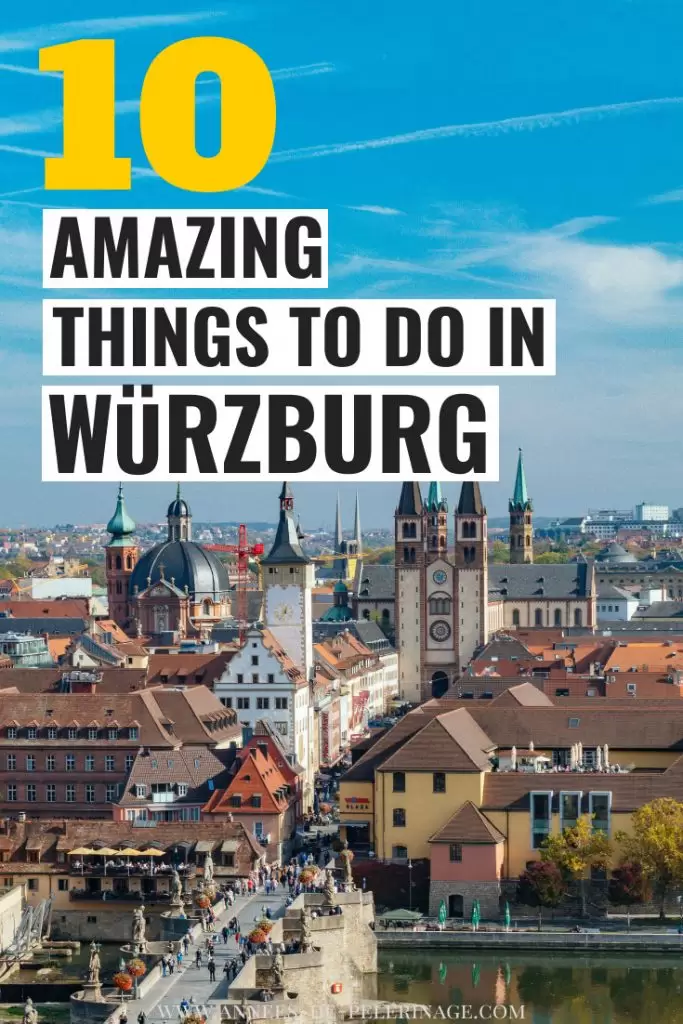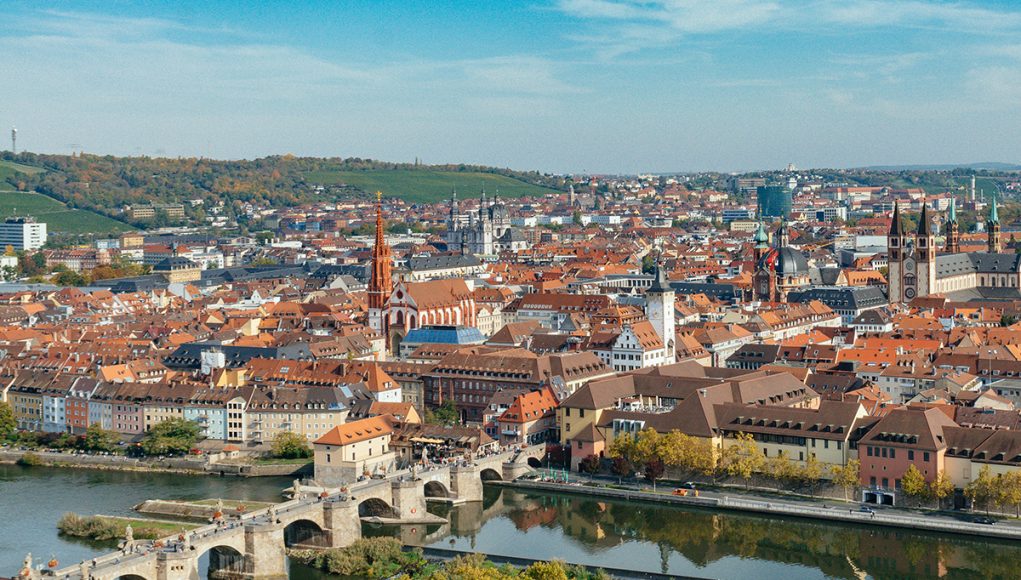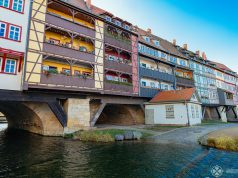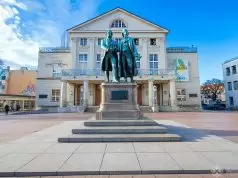In the far North-West of Bavaria hides one of the most beautiful tourist attractions in Germany: Würzburg. Once the residence of the powerful Prince-Bishops, the city of 126.000 inhabitants still guards an important bridge across the River Main. With a vibrant history of more than 1.300 years, there are quite some spectacular things to do in Würzburg.
Sadly, the city was destroyed almost completely during World War II. So, most of the main sights have been reconstructed or heavily renovated, and for the most part, it’s just a normal modern German city. Charming, but certainly not comparable to the fantastic old town of nearby Regensburg.
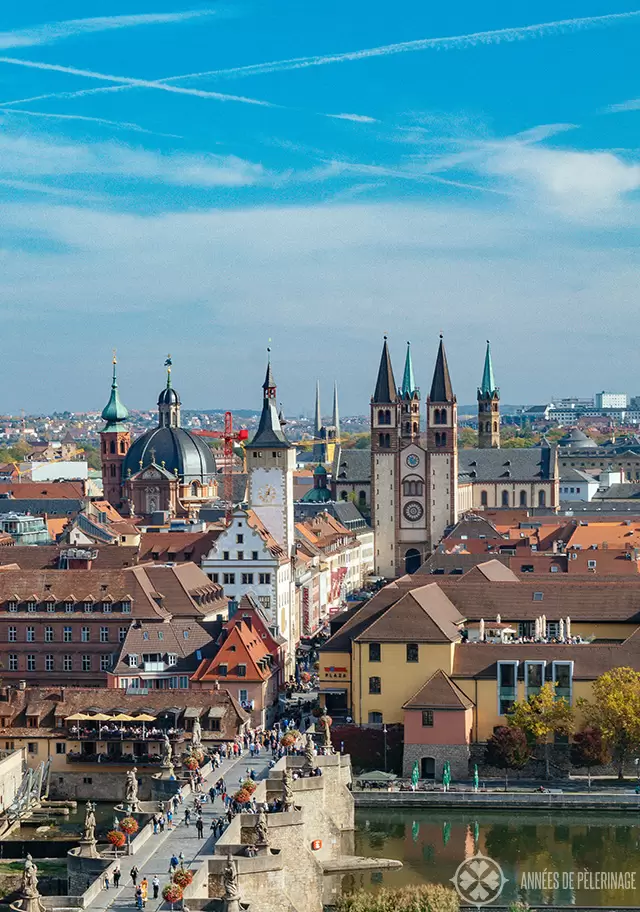
Which isn’t to say you shouldn’t visit. Quite to the contrary. Würzburg is a UNESCO World Heritage site and should be part of every serious Germany itinerary. In fact, I’d say it’s one of the best day trips from Munich. While you can certainly stay a night, I found a day trip to be entirely feasible as it just takes 2 hours by train.
Here is my list of the best things to do in Würzburg
1. Würzburg Residence
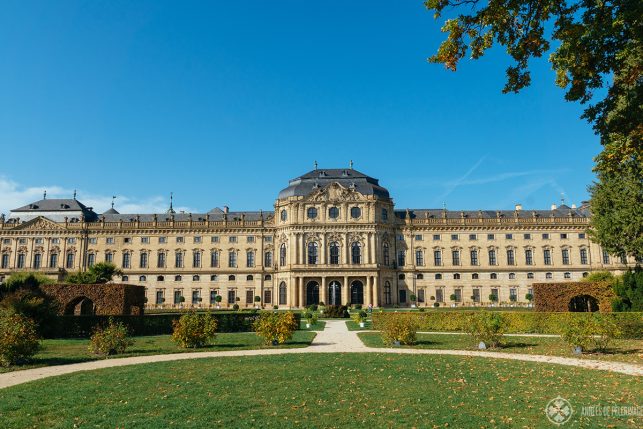
The main reason why most people visit Würzburg is the Würzburger Residenz palace. The baroque masterpiece is often called the most cohesive and extraordinary palace of its kind in the world. It was built between 1720 and 1781. Unlike almost all other European palaces, it was thus finished within one generation, which is just one of the reasons it is now a UNESCO World Heritage site.
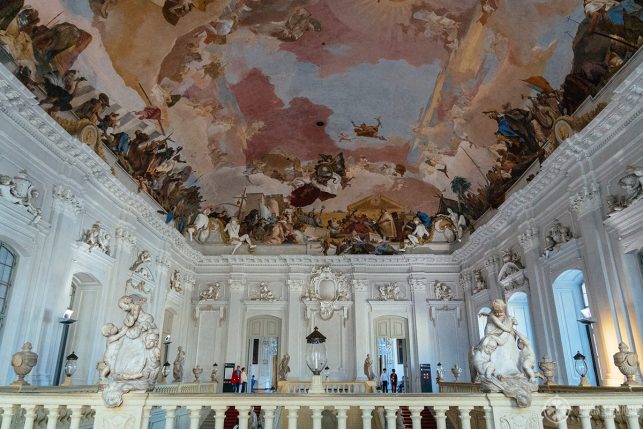
Johann Philipp Franz von Schönborn commissioned the outstanding complex that is now home to the largest ceiling fresco in the world (~580m²!!) painted by none other than Giovanni Battista Tiepolo. The whole staircase-building is truly outstanding and survived World War II unscathed.
Unlike the rest of the palace, which burned down almost completely. Luckily the removed all the furniture and wallhangings before the end of the war, so the integrity of the interiors remains. The Mirror Cabinet counts as the most beautiful and extraordinary Rococo interior in the world.
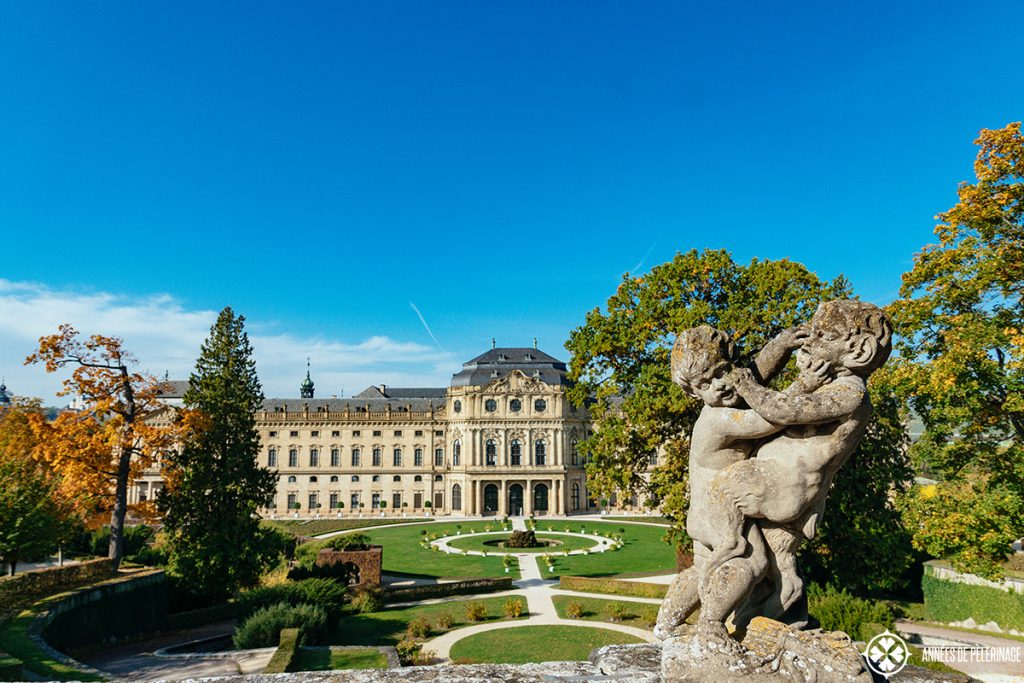
Quite through a miracle, the central Emperor’s Hall (Kaisersaal) wasn’t damaged either. You’ll find amazing frescos by Tiepolo here as well. The whole room exudes the genius of the architect Balthasar Neumann. If you want to see the emperor’s apartments, you have to join one of the free tours.
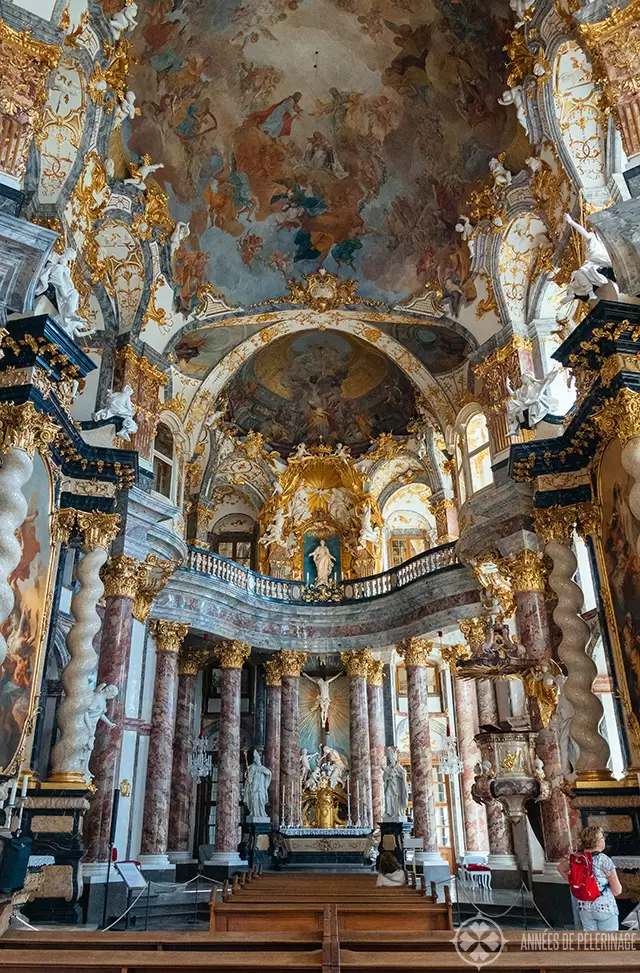
Definitely make sure to visit the Allerheiligste Dreifaltigkeit church through the separate entrance in one of the courtyards (no entrance fee). This outstanding court church is just as remarkable, with more paintings by Tiepolo and amazing stucco work.
Tip: Also take some time to walk through the wonderful park of the Würzburg Residence. You’ll be able to enjoy the full panorama of the gigantic facade (186 meters wide).
2. Old Main Bridge
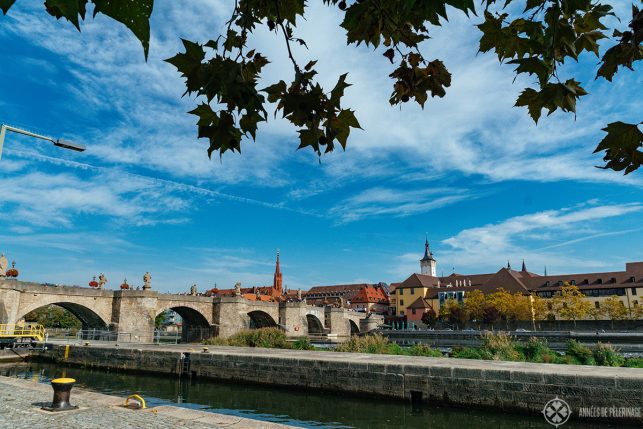
Starting from the 12th century up until 1886, the “Alte Mainbrücke” was the only bridge across the River Main in Würzburg. Even today, the mighty construction dominates the cityscape like nothing else.
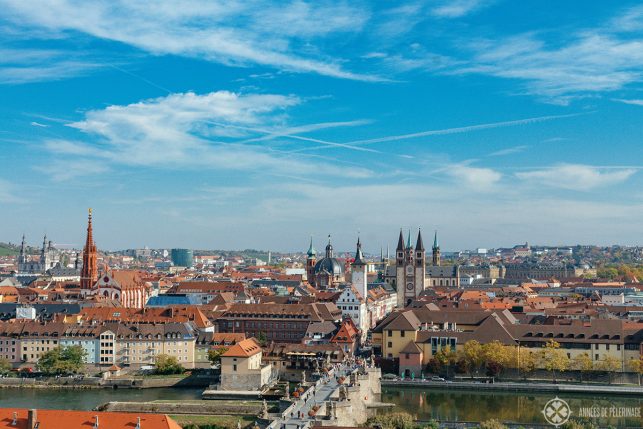
In 1990 the city council converted it into a pedestrian bridge, so tourists get to enjoy the magnificent views of the river valley, the old town and the fortress above the city. The whole setting reminds me of Salzburg in Austria (read my Salzburg guide to see the similarities).
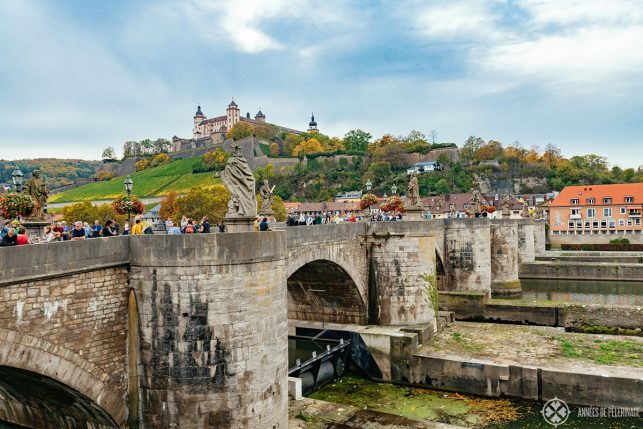
Tip: There’s a bar/restaurant at the beginning of the bridge where you can buy the famous local wine “to go”. So, do it like the locals and stay awhile to sip a glass (or two).
3. Marienberg Fortress
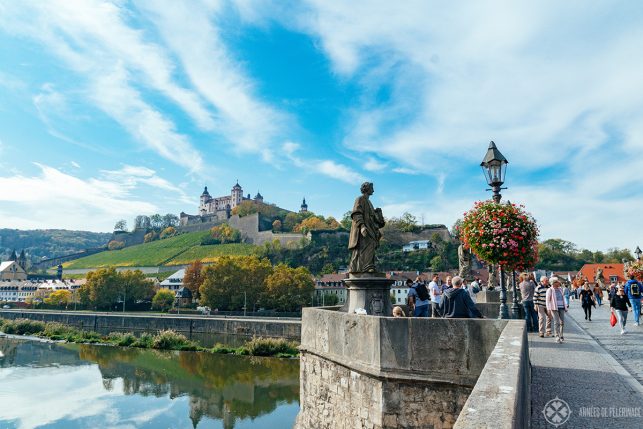
Würzburg literally means fortress of the wort (the area was famous for its beer). So it will probably not surprise you overly much that there is a magnificent fortress in the city. In fact, the Marienberg fortress truly is one of the best places to visit in Würzburg.
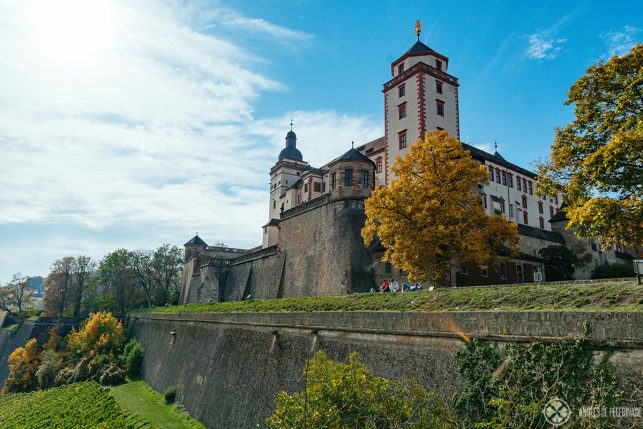
Construction probably started around 706 AD and the following generations continuously added and altered the gigantic complex. Sadly it burned down almost completely in 1945, so there is almost nothing to see inside. There is a lovely museum, but almost no original interiors.
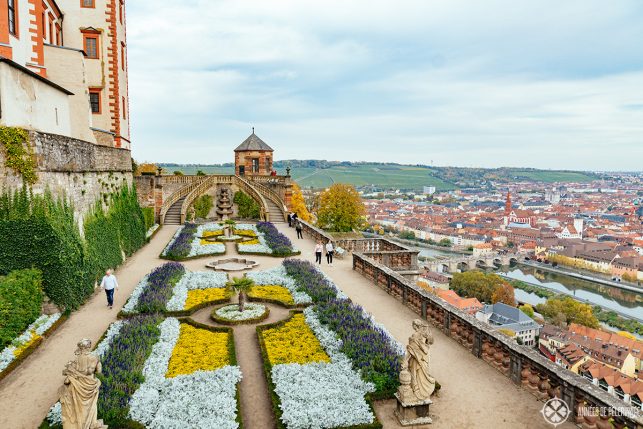
You should definitely visit the Garden of the Prince in front of the fortress where you will be able to enjoy the best view of the old town. There is no entrance fee – only for the museum itself.
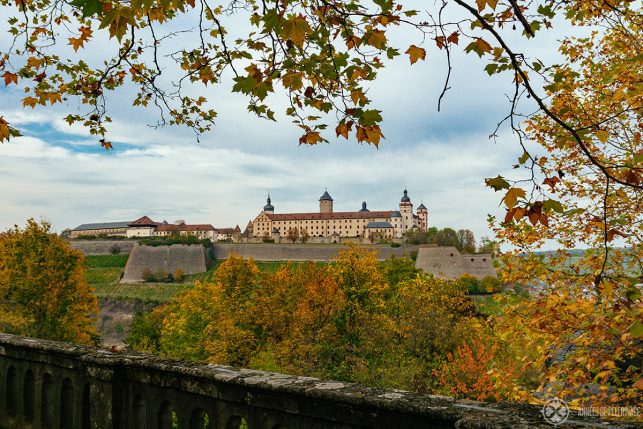
Note: If you want to see the 100 meters deep well, the catacombs and the prison, you have to book a guided tour for 3 Euros. Personally I thought the tour was a bit boring, but if you don’t know a lot about German history yet, I’m sure you will enjoy the extra background.
4. Würzburg Cathedral
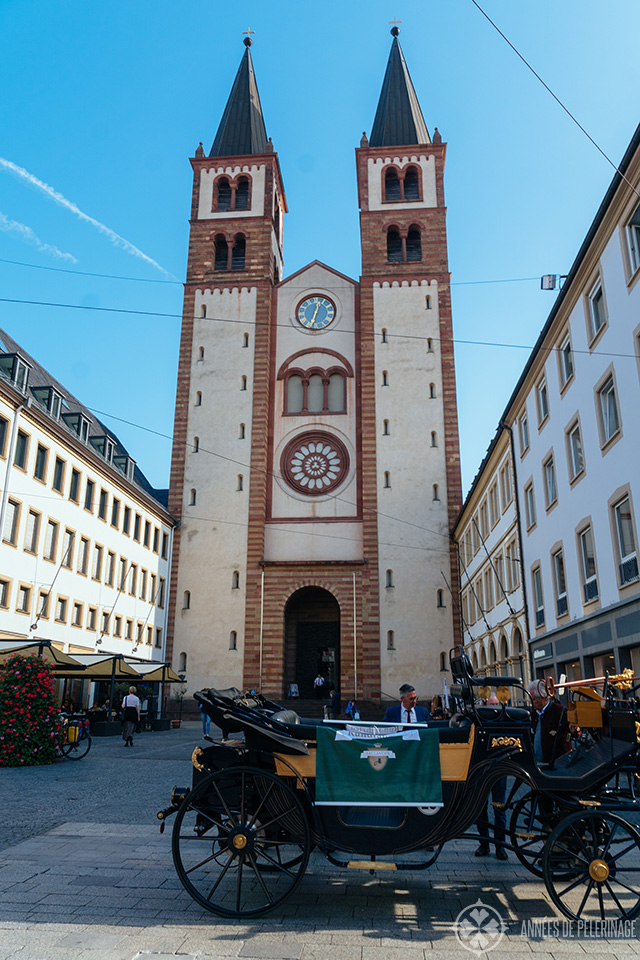
The St. Kilian’s Cathedral is another must-see in Würzburg. The church was finished in 1045 AD and is one of the most important romanesque buildings in Germany. Sadly, the Würzburg Cathedral burned down completely during WWI as well – so a lot of the amazing treasures within are lost.
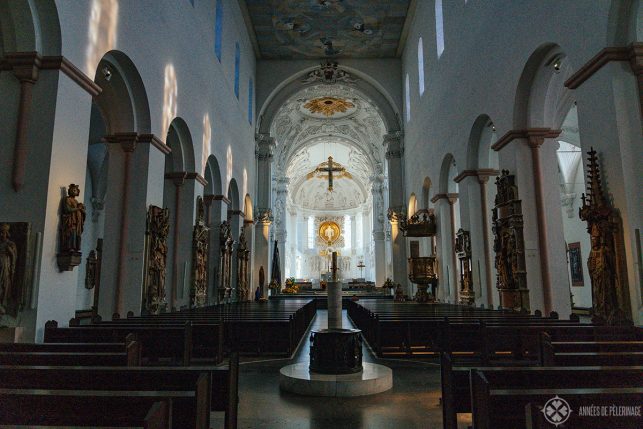
Some of the fantastic sculptures of Tilman Riemenschneider survived, though all wooden sculptures, especially the famous crucifix are lost. What you see inside today is mostly a reconstruction dating back to 1967. It’s an eclectic mixture of old and new – and not everyone likes it.
5. Käppele Sanctuary
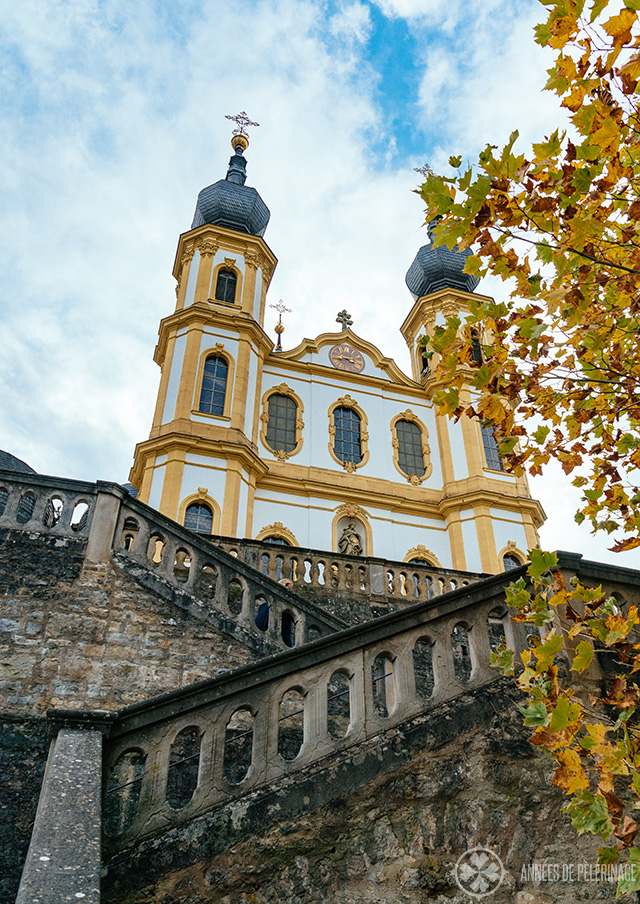
If you are looking for an authentic interior instead, I urge you to hike up to the Käppele Sanctuary on the hill next to the Marienberg fortress. It’s a famous pilgrimage church and quite enchanting.
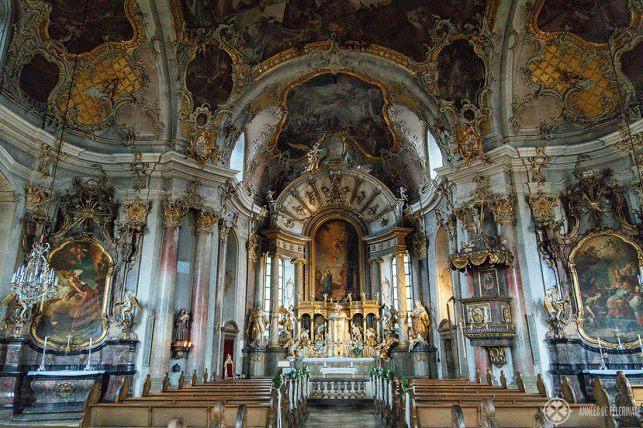
265 stairs lead up the church – lined by many small chapels illustrating the 14 stations of the cross in beautiful sandstone sculptures. It’s extremely serene – especially as few tourists come here. Also, the Käppele Sanctuary – or church of Mariä Heimsuchung – is the only major church that has survived the 1945 bombing.
6. Old Town Hall
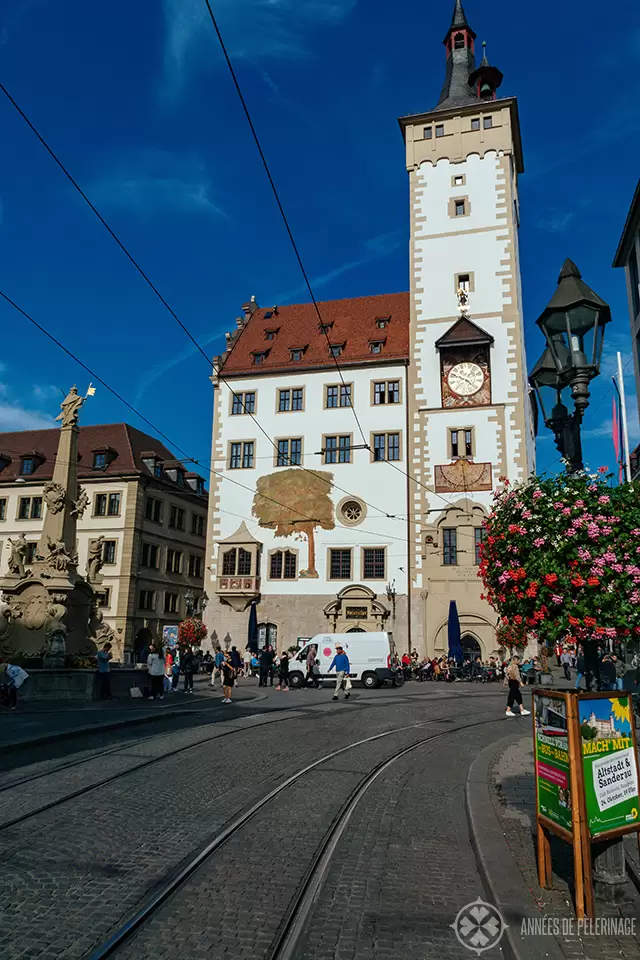
Another romanesque jewel you should definitely put on your list of things to do in Würzburg is the Old Town Hall. The core of the sprawling complex dates back to around 1200 AD, though it was expanded multiple times by later generations.
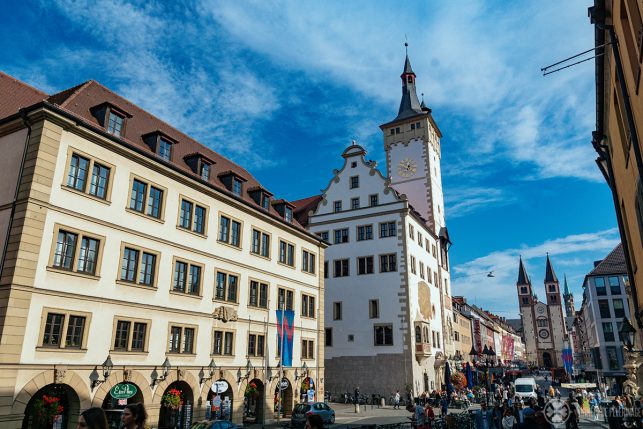
You can’t really go inside, as it is still being used by the city council, but you can marvel at the fantastic tower and murals on the Grafeneckart building. You’ll also find a little exhibition about the bombing of Würzburg on March 16th, 1945 in the ground floor.
7. Julius Hospital
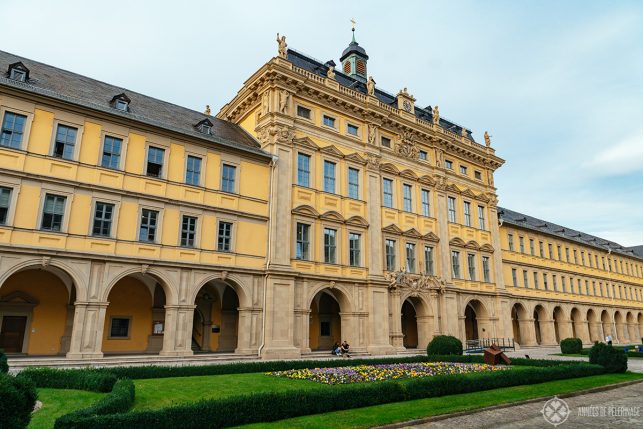
In 1576, Prince-Bishop Julius Echter donated a big portion of his private wealth to build a magnificent hospital. The foundation has been receiving physically and mentally ill patients ever since and ranks among the largest of its kind in Germany.
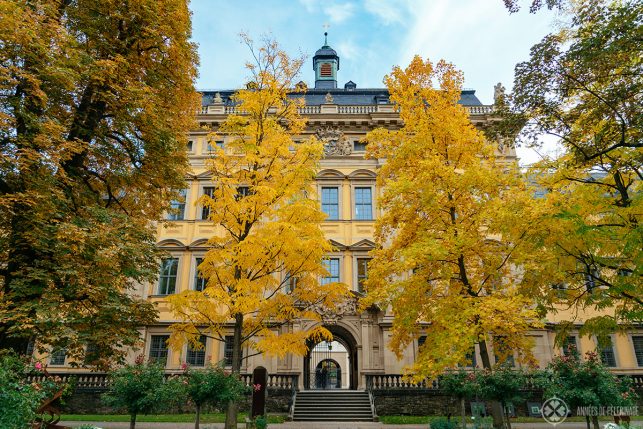
Apart from the wonderful historic building, the main reason why you should visit is the winery – the second largest in Germany. With 177 hectares it’s actually the biggest individual German winegrower. But it’s not only big but also good. Gault Millau ranked it with 4 grapes. The proceeds are used to finance the foundation.
8. Falkenhaus
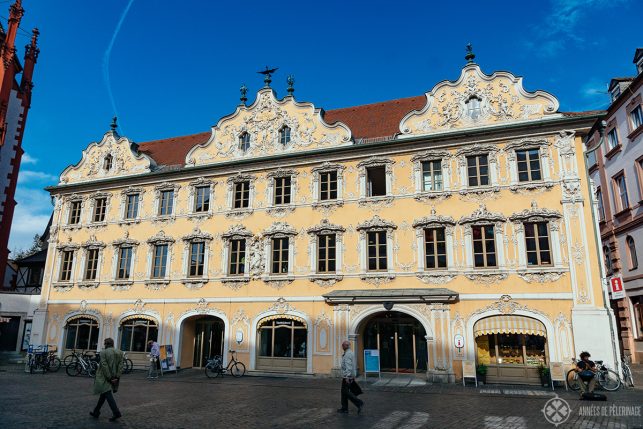
While you are walking around Würzburg’s old town, you absolutely have to stop at the Falkenhaus (‘House of the Falcon’). It was once the house of the cathedral priest and was later acquired by the city to be used as a concert and dancing hall.
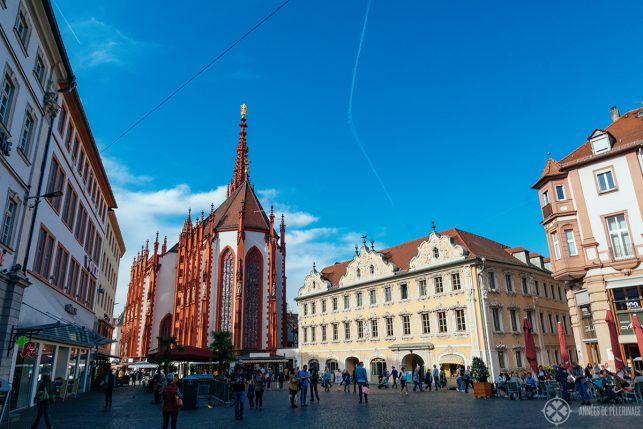
Now it’s home to the city library and a ticket counter, as it also burned down in WWII. The facade, however, is often called the most beautiful rococo facade in South Germany, so it’s definitely worth to take a look.
9. Marienkapelle
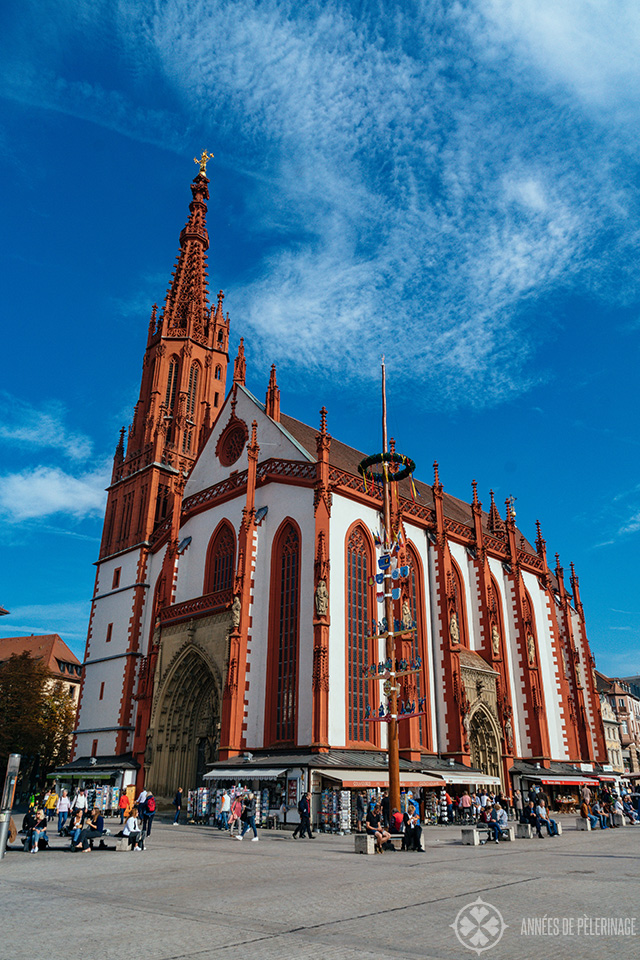
The Marienkappelle (Chapel of Our Lady) is perhaps the most beautiful church in Würzburg. The vermillion red sandstone is quite a sight to behold. The Church stands on the remains of an ancient Jewish synagogue, after the Jewish quarter and all Jews had been exterminated in 1349 (they were blamed for bringing the black death to the city).
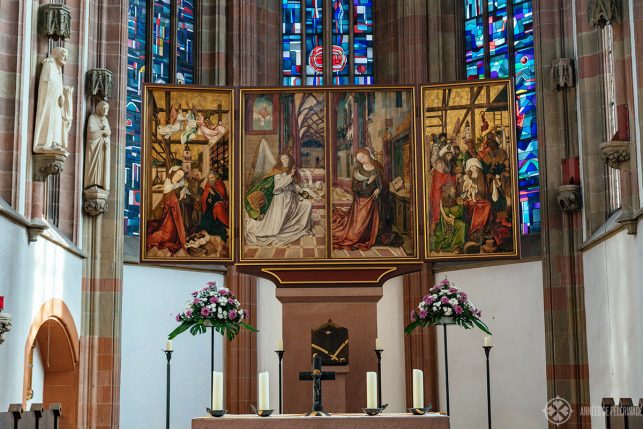
Setting that grizzly part of Würzburg’s history aside, I really love the church. The magnificent medieval high altar is out of this world! While you are there, you can also stroll across the central grocery market, which you will find right in front of the church.
10. Neumünster
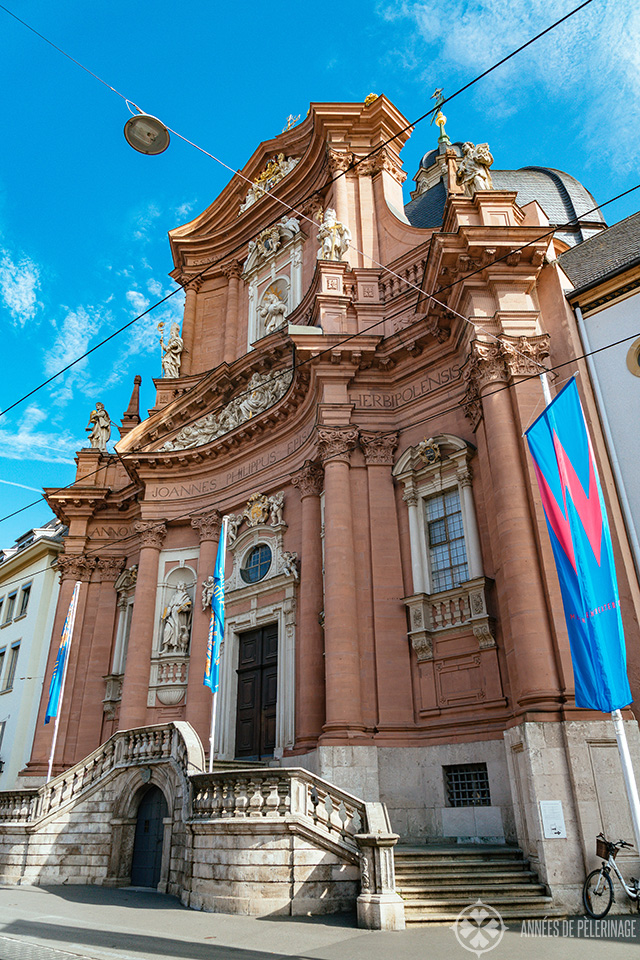
Another last church you might want to check out in Würzburg is the Neumünster. You’ll find it right next to the Cathedral, so it’s not very far away and basically the only reason I am even mentioning it. Once it held important artworks from Johann Baptist Zimmermann, Tilman Riemenschneider, and others. Some of them were re-created and the gigantic cupola certainly IS impressive.
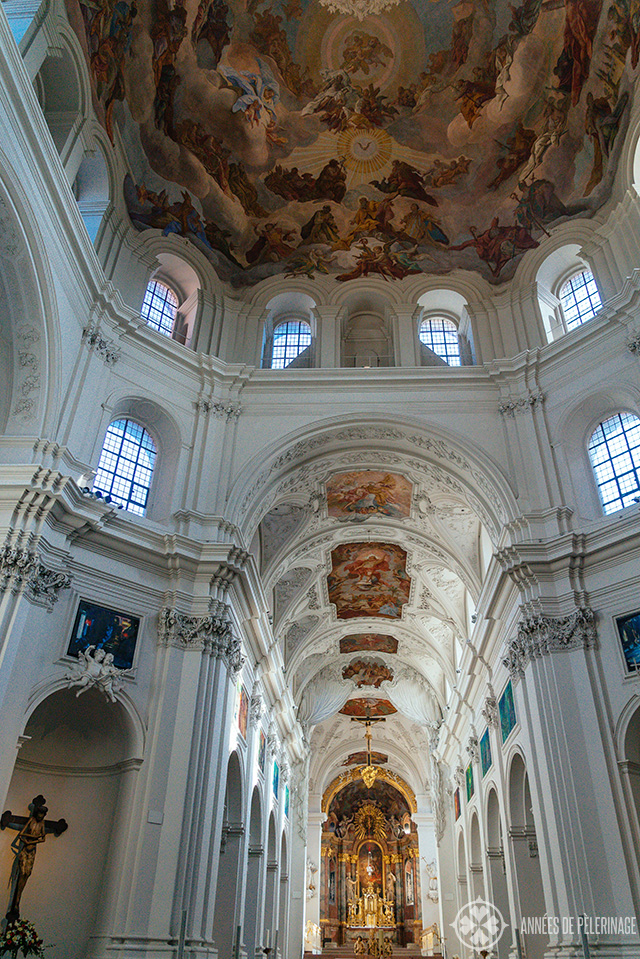
If you got the time, make sure to visit the tiny Lusam garden on the Northside of the church. Here, you will find the burial place of the famous medieval singer and poet Walther von der Vogelweide.
Other things to do in Würzburg
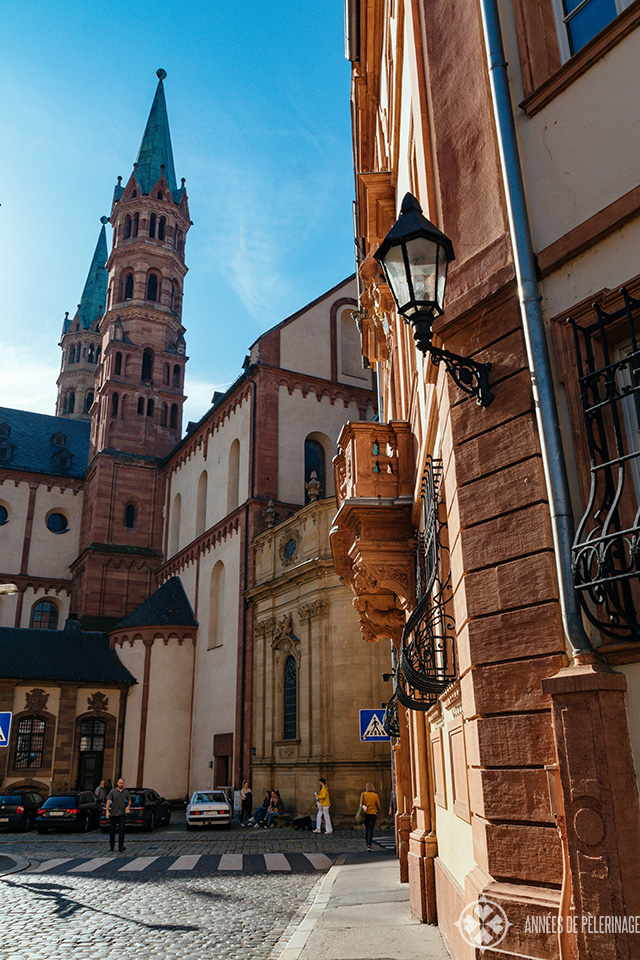
Now you might be wondering if there are a couple of other things to do in Würzburg. Alas, my list has been more or less complete. So much has been destroyed in World War II. While in places like Bamberg or Nürnberg (click to read my guides) you can explore a big old town or important national museums, there is little of that in Würzburg.
Schloss Veitshöchheim, a wonderful water palace, on the outskirts might be the only place really worth mentioning. The Lower Franconian Museum is also sometimes listed among the tourist attractions in Würzburg, but I’m not sure how interesting the place really is for an international visitor.
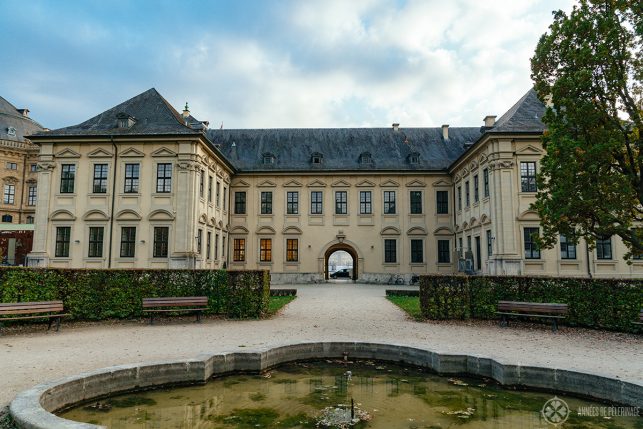
Naturally, you could also take some extra time and go hiking through the vineyards or visit the Staatlicher Hofkeller (‘National Royal Wine Cellar’) for some wine tasting. If you like German white wine, this could be a lovely addition to your Germany itinerary.
Where to stay in Würzburg
Note: I earn a small commission for purchases made through links in this article.
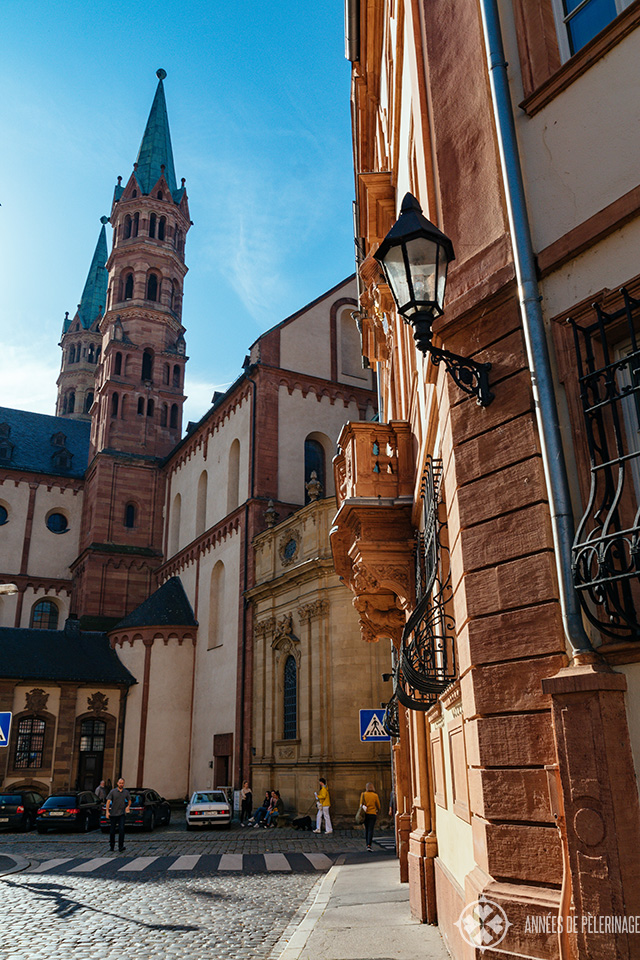
Do you want to dig a little deeper into Würzburg’s history and the surrounding vineyards? Or maybe you need a convenient place to stay on your Germany road trip. Well then, Würzburg might be a great place to sleep one night as it’s almost in the middle of Germany and an excellent stop.
Sadly, there are not all that many hotels in the city, but here are three I can recommend. Usually, I try to pick hotels for all budgets, but as the most expensive hotel on this list is only around 90€ a night per room, I think that distinction is not needed.
- Hotel Würzburger Hof – probably the best hotel in town with a great location. A good traditional German hotel right in the city center
- Schlosshotel Steinburg – if you want to wake up in an old castle & enjoy the views across the vineyards of the River Main, this is the place you need to stay (a bit further outside the city, tho).
- Greifensteiner Hof – another solid family-run hotel in the city center for all budgets.
How to get from Munich to Würzburg
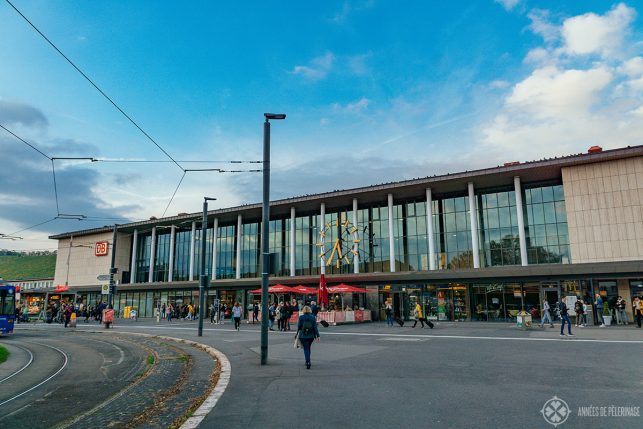
I already mentioned that a day trip from Munich to Würzburg is entirely feasible if you take the high-speed train (ICE). It will take roughly 2 hours and trains leave basically every hour (or even less), though tickets are not all that cheap. You could also take the regional train (slower), but then it will take 3 hours and I’m not sure if you want to stay for 6 hours on the train in one day.
You can easily check your connections on the official website of the German Railway. If you are planning to visit both Munich and Berlin, a good option could be leaving from Munich in the morning, visiting Würzburg during the day and catching a train to Berlin in the evening.
You could also rent a car but I’m not sure if this is feasible. It will take 3 hours to get there (so one hour longer than the train). This option only makes sense if you are planning an extensive Germany road trip and need the car anyway.
Best time to visit Würzburg
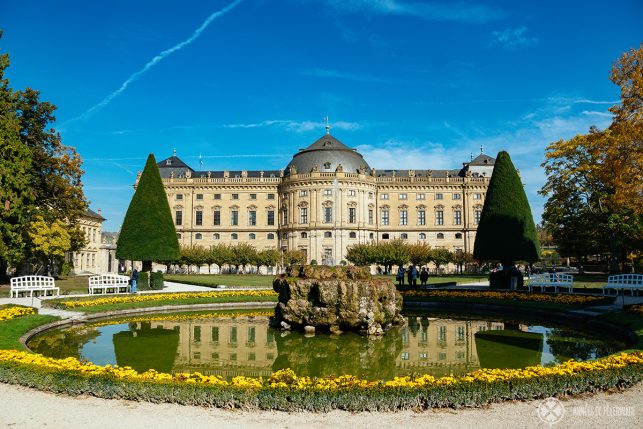
The best time to visit Würzburg is probably July and August. The weather in Germany can be quite fickle and summer usually has the highest chance for sunshine and little rain. That being said, it really doesn’t matter all that much. Würzburg will be beautiful no matter the season, so essentially it will depend on your more general Germany itinerary.
December could also be an option, as you could experience the Würzburg Christmas Market. It’s not a particularly famous one, though. As you can tell from the pictures, my last visit was in autumn and the fall foliage has been quite magical!
So, this was my list of the top things to do in Würburg. I hope you enjoyed it and I was able to provide you with some good inspiration to plan your visit.
